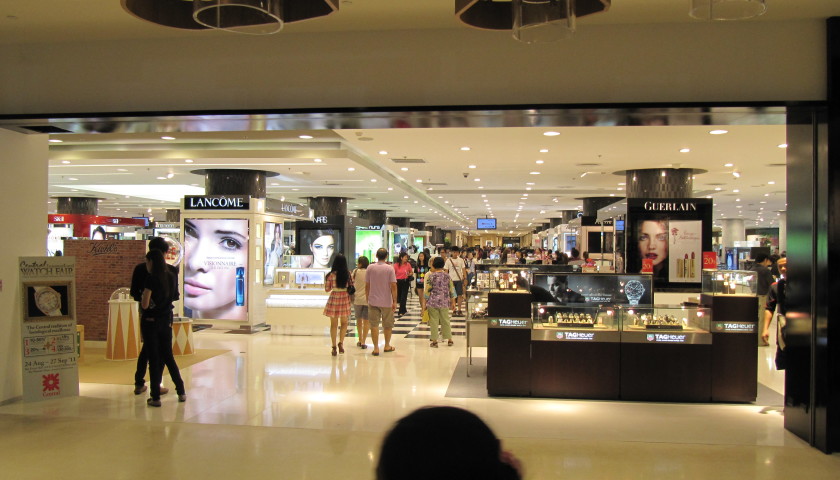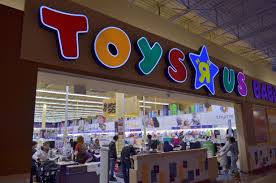Department Store Facts
A department store is a retail establishment which specializes in selling a wide range of products without a single predominant merchandise line. Department stores usually sell products including apparel, furniture, appliances, and additionally select other lines of products such as paint, hardware, toiletries, cosmetics, photographic equipment, jewelry, toys, and sporting goods.
Certain department stores are further classified as discount department stores. Discount department stores commonly have central customer checkout areas, generally in the front area of the store. Department stores are usually part of a retail chain of many stores situated around a country or several countries.
Department Store History
Hudson’s Bay Company in Canada was the first store to include departments, however by modern standards it would not be considered a department store because of the size and range of items that were stocked. The first true department store was founded by Aristide Boucicaut in Paris.
He founded Bon Marché in 1838, and by 1852 it offered a wide variety of goods in “departments” inside one building. Goods were sold at fixed prices, with guarantees allowing exchanges and refunds. By the end of the 19th century, Georges Dufayel, a French credit merchant, had served up to three million customers and was affiliated with La Samaritaine, a large French department store established in 1870 by a former Bon Marché executive.
In New York City in 1846, Alexander Turney Stewart established the Marble Palace on the east-Broadway, between Chambers and Reade streets. He offered European retail merchandise at fixed prices on a variety of dry goods, and advertised a policy of providing “free entrance” to all potential customers. Though it was clad in white marble to look like a Renaissance palazzo, the building’s cast iron construction permitted large plate glass windows.
Department Store Proliferation
In 1862 Stewart built a department store on a full city block at Broadway and 9th Street, opposite Grace Church, with eight floors and nineteen departments of dress goods and furnishing materials, carpets, glass and china, toys and sports equipment, ranged around a central glass-covered court. Within a couple of decades, New York’s retail center had moved uptown, forming a stretch of retail shopping from Marble Palace, that was called the “Ladies’ Mile”.
In 1858 Rowland Hussey Macy founded Macy’s as a dry goods store. Benjamin Altman and Lord & Taylor soon competed with Stewart as New York’s first department stores, later followed by “McCreary’s” and, in Brooklyn, “Abraham & Strauss”.
Similar developments were under way in London (with Liberty & Co) and in Paris (with La Samaritaine) and in Chicago, where department stores sprang up along State Street, notably Marshall Field and Company, which remains the second-largest store in the world (after Macy’s). In 1877, Wanamaker’s opened in Philadelphia. Philadelphia’s John Wanamaker performed a 19th century redevelopment to the former Pennsylvania Railroad terminal in that city, and eventually opened a modern day department store in the building.
On March 1, 1869 Zion’s Cooperative Mercantile Institution was opened in Salt Lake City as a new community store that became the first incorporated department store in America in 1870. A new 3-story brick and iron store was built in 1876, noted for its unique architecture and striped awnings.
This store was replaced by an enclosed shopping center in 1973, and the new Zion department store preserved the gilt-edged ornate facade of the old store. In 1999 the May Department Stores bought a 14-store ZCMI chain and changed its name to “Meier & Frank”, a May property with eight stores in Oregon and Washington.
In 1881, Joseph Lowthian Hudson opened a small men’s clothing store in Detroit. After 10 years he had 8 stores in the midwest and was the most profitable clothing retailer in the country. In 1893 he began construction of the immense department store at Gratiot and Farmer streets in Detroit. The 25-story tower was added in 1928, and a 12-story addition in 1946, giving the entire complex 49 acres of floor space. In 1954 the company became a suburban shopping center pioneer when it built Northland 13 miles northwest of Detroit.
In 1969 it merged with the Dayton Corporation to create Dayton-Hudson headquartered in Minneapolis. George Dayton had founded his Dayton’s Daylight store in Minneapolis in 1902 and the AMC cooperative in 1912, built the Southland Shopping Center in 1956, and started the Target discount store chain in 1962. The new corporation closed the flagship Hudson department store in downtown Detroit in 1983, but expanded its other retail operations. It acquired Mervyn’s in 1978, Marshall Field’s in 1990, and renamed itself the Target Corporation in 2000.
Department Store Layout
By 1890 a new world of retailing had been created as department stores had a clear market position as universal providers. General stores eventually became department stores as small towns became cities. The most prominent department stores emerged from small shops. The department store created several of North America’s first large businesses. The department store is also largely responsible for the standard store design seen today, because of its size it required new building materials, glass technology and new heating, amongst other architectural innovations.
The store layouts made shopping easier for consumers irrespective of their social or economic background. The department store also offered new customer services never before seen such as restaurants, restrooms, reading rooms, home delivery, wrapping services, store hours, new types of merchandise displays, and so forth.
Department Store Lease
Some department stores leased space to individual merchants, along the lines of the new change in late 17th-century London, but by 1900 the smaller companies were purchased or eventually replaced by the larger companies. In some ways they were very similar to our modern malls, where the property owner has no direct interest in the actual department store itself, other than to collect rent and provide utilities. Today only the most specialized departments are leased out.
This could include photography and photo finishing, automotive services, or financial services. However this is rare, even a store’s restaurant is usually run by the department store itself today.
Before the 1950s the department store held an eminent place in both Canada and Australia, during both the Great Depression and World War II. However, since then they have suffered from strong competition from specialist stores. Most recently the competition has intensified further with the advent of larger scale superstores (Jones et al. 1994; Merrilees and Miller 1997).
However competition was not the only reason for the department stores weakening strength; the changing structure of cities also affected them as the compact and centralized 19th century city with its mass transit lines converging on the downtown, was a perfect environment for department store growth.




